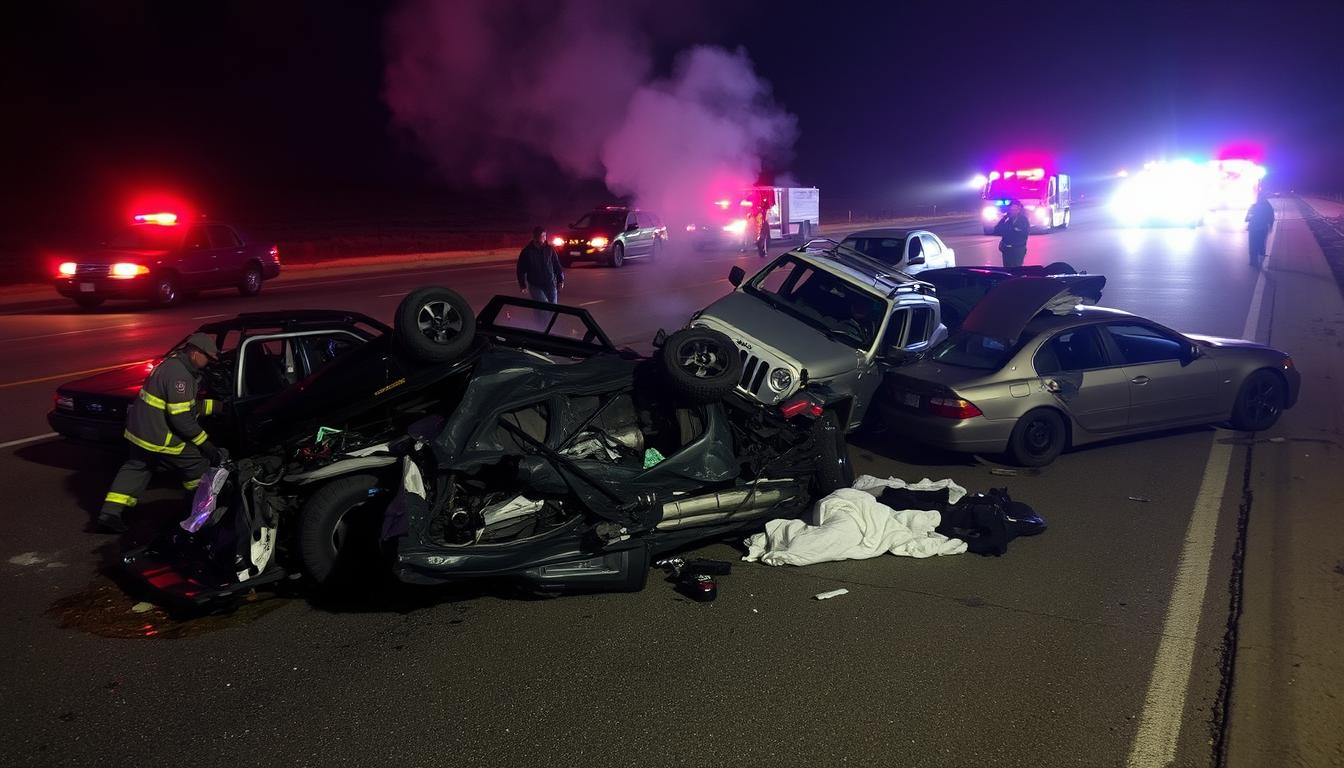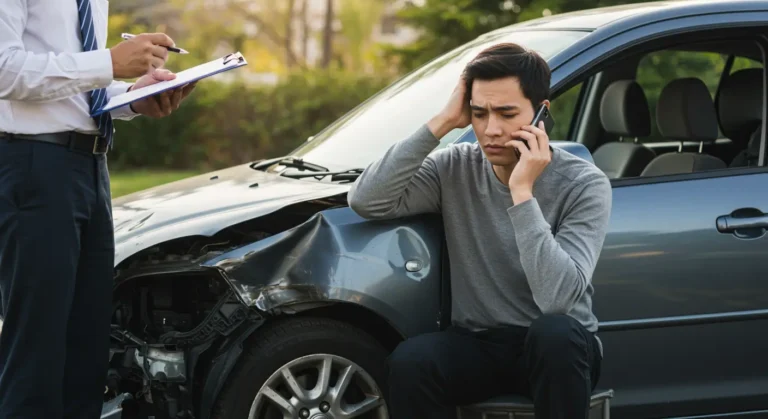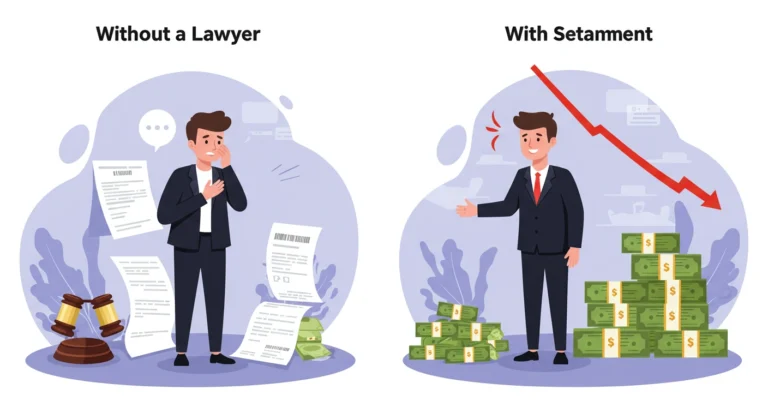Fatal traffic accidents on highways causing multiple deaths

Table of Contents
Highway fatalities are a big public safety issue in the United States. Every year, accidents on highways hurt many families and communities. These accidents turn simple trips into tragedies.
Understanding highway safety is key. Experts say most accidents are not random. They often happen because of things like how drivers act, the road conditions, and the infrastructure.
These accidents are more than just numbers. They affect real people, families, and communities. Finding out why they happen is crucial to stopping them.
Key Takeaways
- Highway fatal accidents represent a significant public safety challenge
- Multiple-death incidents have profound psychological impacts
- Most highway accidents are preventable through strategic interventions
- Driver behavior plays a crucial role in traffic safety
- Comprehensive analysis can help reduce future highway fatalities
Understanding the Scale of Highway Fatalities in America
The highways in the United States are key for travel but also risky for millions. The numbers show a serious issue with road safety across the country.
Looking into highway safety means understanding many factors that lead to fatal crashes. Every year, thousands die on American roads. This calls for urgent action and ways to prevent these tragedies.
Annual Death Toll on U.S. Highways
Recent data from the National Highway Traffic Safety Administration gives us important insights:
- About 38,000 fatal accidents happen on U.S. highways each year.
- More than 42,000 people die in highway incidents annually.
- Almost 1 in 100 fatal crashes involve more than one vehicle.
Most Dangerous Highway Corridors
Some highways are known for their high accident rates. The most dangerous include:
- Interstate 45 in Texas
- U.S. Route 1 in Florida
- Interstate 10 across the Southern United States
Peak Times for Fatal Accidents
Knowing when accidents are most likely can help drivers stay safe. The data shows:
- Weekend nights (Friday and Saturday)
- Holiday travel times
- Rush hour (3 PM – 6 PM)
- Late-night driving (11 PM – 3 AM)
This information highlights the need for constant awareness and safety steps for all on the roads.
Common Causes of Fatal Traffic Accident on the Highway
It’s important to know why highway accidents happen to make roads safer. These accidents often come from a mix of human actions, car conditions, and the environment.
The main reasons for highway accidents fall into a few main areas:
- Distracted Driving: Using phones, eating, and other distractions make accidents more likely
- Impaired Driving: Drinking alcohol or taking drugs slows down how fast you can react and think
- Speeding: Driving too fast makes it harder to control your car and can make crashes worse
- Driver Fatigue: Driving for too long without rest makes you less alert and focused
Distracted driving is a big problem. In 2020, about 3,142 people died because of it. Phones and car tech are big risks for drivers.
Impaired driving is also a big issue. Drivers who have been drinking or taking drugs face:
- Slower reaction times
- Poorer decision-making
- Worse coordination
Safety experts say being aware and taking steps to prevent accidents is crucial.
Knowing why accidents happen can help drivers make better choices on the road.
Impact of Weather Conditions on Multiple-Vehicle Collisions
Weather is a big deal for highway safety. It makes accidents more likely on roads across the United States. Drivers have to deal with changing weather that can make roads very dangerous very fast.
Bad weather makes it hard to see on the road. Different weather conditions require drivers to be extra careful and plan their route well.
Visibility Issues and Road Conditions
Drivers face many visibility problems in different weather:
- Dense fog reduces visibility to under 100 feet
- Heavy rain makes roads look like mirrors
- Snowstorms cause white-out conditions
- Sudden wind gusts can make cars unstable
Seasonal Accident Patterns
Each season brings its own driving dangers. Knowing these helps drivers stay safe and adjust their driving.
| Season | Primary Driving Risks | Accident Probability |
|---|---|---|
| Winter | Ice, Snow, Reduced Visibility | 35% Higher Risk |
| Spring | Rain, Flooding, Wind | 25% Higher Risk |
| Summer | Heat, Thunderstorms | 20% Higher Risk |
| Fall | Wet Leaves, Early Darkness | 15% Higher Risk |
Weather-Related Safety Protocols
Safe driving in bad weather needs careful planning:
- Keep your car in good shape
- Check your tires
- Slow down in bad weather
- Leave more space between cars
- Use your lights correctly
Being aware and driving carefully are the best ways to avoid accidents in bad weather.
Role of Commercial Vehicles in Highway Fatalities
Commercial vehicle crashes are a big problem on American roads. Big trucks, up to 80,000 pounds, can turn simple accidents into huge disasters.
Looking at the numbers, we see big challenges:
- Commercial trucks cause about 10% of fatal crashes on highways
- Driver tiredness is behind nearly 40% of truck crashes
- Truck problems and bad maintenance raise crash risks
What makes commercial vehicles risky includes:
- Long hours driving make drivers less alert
- Big blind spots make it hard for truck drivers to see
- Heavy trucks take longer to stop
| Risk Factor | Percentage Impact |
|---|---|
| Driver Fatigue | 38% |
| Mechanical Issues | 25% |
| Speed-Related Problems | 22% |
| Weather Conditions | 15% |
Rules are in place to lower these risks. They limit driving hours, check trucks regularly, and train drivers well. Knowing these facts helps make roads safer and cuts down on truck accidents.
Speed-Related Factors in Multiple-Death Accidents
Speed can turn simple traffic incidents into major disasters. High-speed crashes are especially dangerous on American roads. They greatly increase the chance of fatal outcomes. Every extra mile per hour can lead to more severe crashes.
Looking into how speed affects accident severity shows us something important. Studies have shown that breaking speed limits makes crashes much more likely.
High-Speed Impact Physics
Kinetic energy grows fast with speed. This means:
- Doubling speed quadruples collision force
- Vehicle mass multiplies impact intensity
- Stopping distance increases exponentially
“Every mile per hour matters when human lives are at stake.” – Traffic Safety Research Institute
Speed Limit Compliance Issues
Many things lead to drivers going over the speed limit:
- Feeling rushed
- Thinking they’re better drivers
- Lack of police checks
- Designs that encourage speeding
Impact of Excessive Speed on Survival Rates
There’s a clear link between speed and survival chances. Going over 55 mph on highways makes crashes much deadlier. What might have been survivable becomes fatal.
Lowering speed by just 10 mph can cut fatal crash risk by up to 50%.
Emergency Response Protocols for Major Highway Accidents
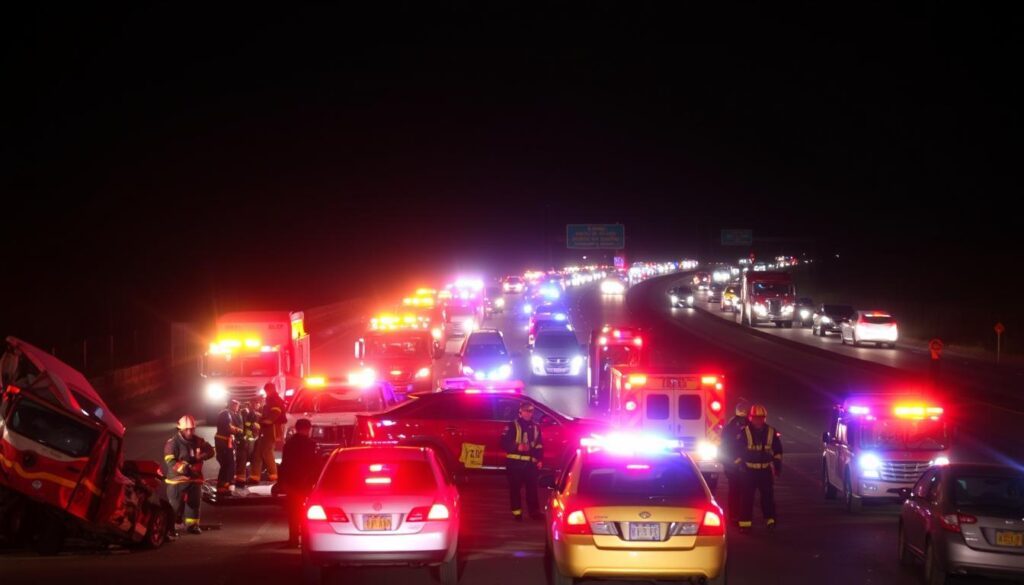
When a big crash happens on a busy highway, emergency teams must act fast. They need to work together to keep everyone safe. This includes police, firefighters, and medical teams.
The first steps in handling a major accident are:
- Stabilizing the scene right away
- Quickly checking who’s hurt
- Moving traffic and protecting the crash site
- Getting the injured to the hospital
First responders use special ways to keep everyone safe. Police, firefighters, and medical teams work together. They make safe areas for rescues.
Quick and coordinated responses can dramatically reduce fatalities during highway emergencies.
Important tech helps in responding to accidents. Dispatchers use GPS and real-time systems to guide teams. Teams get special training to know their roles in big rescues.
The main aim of emergency services is to:
- Keep those who are alive safe
- Stop more accidents from happening
- Give medical help right away
- Get important details for investigations
Handling big accidents well needs fast decisions, good training, and teamwork.
Prevention Strategies and Safety Measures
To cut down on fatal highway accidents, we need a mix of new tech, smart road design, and getting the word out. We must find creative ways to tackle all parts of highway safety.
New tech has changed how cars protect drivers and keep them alert. Car makers have created systems that lower the chance of big accidents.
Modern Vehicle Safety Technologies
- Automatic Emergency Braking (AEB) systems
- Lane Departure Warning mechanisms
- Adaptive Cruise Control
- Blind Spot Detection
- 360-Degree Camera Monitoring
Highway Design Safety Improvements
Safe road design is key to stopping accidents. Engineers have made big changes to roads to lower crash risks.
| Safety Feature | Accident Reduction Potential |
|---|---|
| Improved Median Barriers | 35-45% reduction in head-on collisions |
| Enhanced Road Signage | 25-30% improvement in driver navigation |
| Rumble Strip Implementation | 20-25% decrease in run-off-road accidents |
Public Safety Campaigns
Good public safety campaigns are vital for changing how drivers act and making roads safer. These efforts focus on key dangers and push for safer driving.
“Safety is not an accident. It’s a choice.” – National Highway Traffic Safety Administration
By using tech, improving roads, and teaching people, we can make highways safer. This mix is the best way to lower death rates and save lives.
Legal Implications and Liability in Multi-Vehicle Accidents
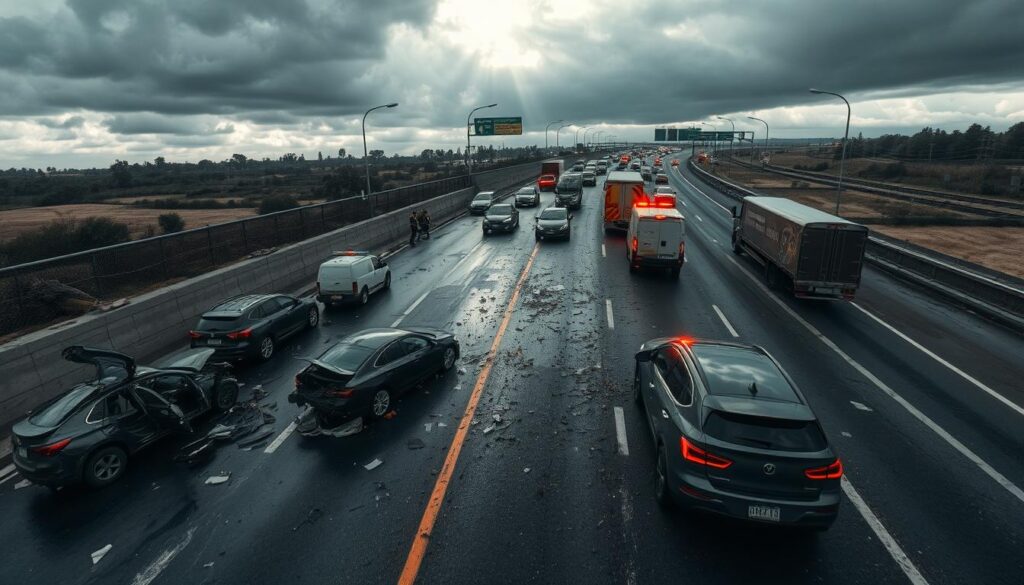
Multi-vehicle accidents are complex for lawyers and insurance companies. When many cars crash, figuring out who’s at fault is hard. Lawyers need to study the crash carefully to find out who was responsible.
The steps to figure out who’s liable in a multi-car crash are:
- Comprehensive accident scene investigation
- Gathering electronic and physical evidence
- Interviewing witnesses and collecting statements
- Analyzing vehicle damage and road conditions
These lawsuits often focus on who was careless. Lawyers must show which driver’s actions caused the crash. Comparative negligence rules make it harder to decide who’s at fault, as fault can be shared.
Today, technology is key in these cases. Dash cams, car computers, and phones can give important clues. Lawyers and insurance use digital tools to piece together what happened.
The complexity of multi-vehicle accidents requires sophisticated legal expertise to navigate the intricate landscape of liability and compensation.
Important things to consider in these lawsuits are:
- Driver behavior and potential negligence
- Vehicle maintenance records
- Road conditions and design
- Potential manufacturer defects
People hurt in these crashes need good lawyers. Lawyers who know how to handle these cases can help get fair compensation for injuries and damages.
Impact on Families and Communities
Fatal highway accidents leave deep scars on families and communities. They cause emotional pain that goes beyond the immediate shock. The effects spread from close family ties to wider neighborhoods and support groups.
Families hit by such loss face many hurdles:
- Emotional trauma and grief counseling needs
- Unexpected financial burdens
- Long-term psychological recovery
- Legal and insurance complexities
Support for accident victims is crucial in these times. Local groups offer vital help and healing chances for those affected by highway deaths.
| Support Resource | Type of Assistance |
|---|---|
| Grief Counseling Centers | Psychological support |
| Victim Advocacy Groups | Legal guidance |
| Community Support Networks | Emotional healing programs |
The impact of highway deaths goes beyond individual families. First responders, witnesses, and locals often suffer from secondary trauma. This calls for a wide range of support and mental health services.
“Every highway fatality represents not just a statistic, but a profound human loss that reverberates through entire communities.” – National Highway Safety Council
Healing is a team effort. It needs compassion and support systems that understand the deep connections of grief and recovery.
Conclusion
Highway safety is a big challenge that needs a complete solution. We must use new technologies, make smart policies, and teach drivers well. Keeping our roads safe is a team effort to save lives.
Now, we have better ways to stop accidents. Car makers and road officials are working hard. They add features like automatic brakes and lane warning systems to cars. These help a lot in avoiding crashes.
The future of road safety looks bright with new tech and learning from data. Things like self-driving cars and smart roads are coming. They will change how we travel and keep us safe.
To make highways safer, we need to do many things at once. We must improve technology, teach drivers well, design better roads, and enforce rules. But most importantly, every driver must drive safely. This is the key to fewer accidents and safer communities.
FAQ
What are the most dangerous highways in the United States?
Some of the most dangerous highways include Interstate 45 in Texas, Interstate 10 in Arizona, and Interstate 95 in Florida. These roads have high rates of fatal accidents. This is due to heavy traffic, tough road conditions, and fast speeds.
How do weather conditions impact highway safety?
Weather greatly affects highway safety. Rain, snow, fog, and ice make roads dangerous. They can cause many accidents, especially in winter.
What are the leading causes of fatal highway accidents?
Fatal accidents often result from distracted driving, drunk driving, speeding, aggressive driving, tired drivers, and bad vehicle upkeep. Usually, a mix of these factors leads to accidents.
How do commercial vehicles contribute to highway fatalities?
Big trucks are a big risk because of their size and weight. Driver tiredness, long stopping times, blind spots, and mechanical issues can cause serious accidents.
What safety technologies are helping prevent highway accidents?
New safety features like automatic emergency braking, lane departure warnings, and adaptive cruise control help prevent accidents. These technologies are making roads safer.
What time of day are highway accidents most likely to occur?
Accidents are most common during rush hours (6-9 AM and 4-7 PM), late at night (midnight to 3 AM), and during holidays. This is when traffic is heavy and drivers are tired.
How can drivers improve their safety on highways?
Drivers can stay safe by keeping a safe distance, avoiding distractions, and staying alert. They should follow speed limits, use turn signals, check blind spots, and never drive drunk.
What legal recourse do victims have after a multi-vehicle highway accident?
Victims can seek legal action through insurance claims or lawsuits. Figuring out who is at fault can be hard. It often needs a detailed investigation and might involve many parties.
How do emergency responders handle major highway accidents?
Emergency teams use a plan that involves many agencies. They quickly assess the scene, set up safety zones, provide medical help, manage traffic, and investigate accidents to prevent more problems.
Are highways becoming safer over time?
Yes, highways are getting safer thanks to better technology and road design. But, accidents are still a big worry. Work on technology, education, and roads keeps going to make highways safer.

